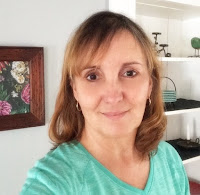 |
| Reach for the moon and you might catch a star |
You've
finished your book. All the major edits and rewrites are done. Now it's time to
polish. Polishing includes the obvious edits, including making sure the story elements
are present, verbs are active, every chapter moves the story forward, etc., as
in the Fiction Short List put together from the collection I've made over time
for self-editing, which appeared in my December 28, 2015 WOTM post.
Fiction
Short List:
Does
the beginning draw you in? Or could the story be started at a different point?
Does
the main character appear soon enough? Is there enough dialogue in the
beginning?
Does
the story show and not tell?
Is
there a beginning, middle and end? Can you form a circle from beginning to end?
Do the
scenes flow and advance the plot?
Does
each character have an arc?
Does
your main character have a goal?
Does
your story have conflict?
Is your story predictable?
Did you explain everything well?
Does
the main character grow and change by the end?
Would a
different point of view, such as first person as opposed to third person, make
the story more interesting?
Are
there any shifts in point of view?
Does
the dialogue sound natural?
Are there any description
"dumps" where pieces of the information could be spread out, ever so
briefly? Does the story come to a
satisfying conclusion?
Are you finished? Not
quite. Now it's time to polish. Check to see if you've covered these
technicalities, which I've collected since recently finishing my mystery novel
for 8-12 year olds.
Edit each Item One
at a Time
1. Each chapter beginning
establishes "place" and each chapter ending entices your reader to
find out what happens next.
2. Check past drafts to add
any spicy details that were inadvertently edited out, such as brief descriptive
phrases and personal thoughts of your main character.
3. Make
sure you've covered the story elements, such as: Concept, Plot,
Characterization, Voice, and Structure; beginning, middle and end, in a
nutshell, the basics.
4. Are
there are any "dead spots" where the story doesn't move forward?
Delete them.
5. Change
any "telling" sentences to "show" what your character is
doing and thinking.
6. Be specific. Check for anything vague or general and change to specific.
7. Do a drama check. Heighten the drama wherever you can.
Try
this simple outline for each scene from Elaine Marie
Alphin's book, Creating Characters Kids will Love:
I prop
Alphin's book in front of me when I'm creating a scene. Her example on page nine
is especially helpful, as this excerpt shows:
His
sneakers were braced against the roof's shingles. Slowly, Benjy took one hand
off the sill and gripped a lower shingle instead. Then he took a deep breath,
told himself very firmly not to be afraid, and let go of the sill with his
other hand . . . Why couldn't he have been a few inches taller? Benjy cursed
his height silently. Even just a couple of inches would have meant his toes
might have been able to feel the bench beneath him. But wishing wouldn't make
him grow.
6. Scrutinize
every word. For example: Make sure you've cut out unnecessary prepositional
phrases, haven't overused adjectives as too many adjectives weaken nouns,
haven't relied on unnecessary words such as these words listed by author Margot Finke on her
website: seemed; thought;
started; might; she said; he saw; got and get. Use fresh figurative language; no clichés. Use clear, concise language that paints a picture. One editor described this in a way that you won't easily forget: "Write it plain then make it fancy."
7. Make sure every scene builds toward an
explosive climax and satisfying ending.
8. Collect important information in one
place to help write your letter to the publisher and market your book:
The story problem
The main character's special need or flaw
The theme: Does your theme clearly
stand out (without stating it)? My favorite example is Bruce Coville's, The Skull of Truth. Charlie
Eggleston has a not-so-slight problem telling the truth. On page three "a familiar voice sneered, 'Well, look here--it's Charlie Eggleston, king of the liars.'" Telling the truth carries throughout the book; the last line finishes the theme off with, "And that was the absolute truth." Even though 'truth' is brought out in many not-so subtle ways--it appears even in the title--the book is such fun to read, the message of 'telling the truth' is integral to the story and never stated.
The encapsulation of your story in as
few words as possible.
The synopsis: Tell someone or say out loud
what your book is about--not always easy for someone who expresses
herself/himself on the page.
The book jacket blurb.
The list of characters, brief
descriptions, their goals and their own character arc.
The list of chapter titles and page
numbers.
9. Tie up loose ends: Jot down each part
of the action and goal of each character and make sure you've followed through.
10. Last but Most Important: Your first sentence and
first chapter are the most important part of your book. Make sure they contain
what is necessary to interest an editor and your reader. Somewhere in my
research I read that Stephen King has been known to spend a year on the first
chapter. That's how important it is to get it right. There are very specific
points editors look for that must be covered.
Here are samples from two books I use
to help me get the correct information in the first sentence, first paragraph
and first chapter. In the opening, a few sparse words establish "place,"
establish a bond with the main character and tell you what the entire book is
about.
The Green Ghost by Marion Dane Bauer.
1938
"Papa! Look! isn't it
beautiful?" Lillian breathed the words, long and slow. In the cold air,
her breath clouded the store window. She wiped it clear again with a corner of
her scarf.
The cloak was beautiful. It was dark
green wool . . . All that green made Lillian think of a Christmas tree.
We don't know it yet, but we've met our ghost--she is the main character who came from an earlier time, 1938. In Chapter two we meet Kaye who is riding with her parents to her grandmother's house for Christmas in a snow storm. While reading the book I thought Kaye was the main character. Later when I analyzed the story I realized that though most of the book was about Kaye, Lillian was the main character. She became the green ghost wearing the green cloak, which was made clear in the above first two paragraphs but was so subtle I didn't catch it until I thought about it.
When My Name was Keoko by Linda Sue
Park
1. Sun-hee (1940)
"It's
only a rumor," Abuji said as I cleared the table. "They'll never
carry it out."
In one
amazing first sentence we learn what the book is about. The chapter goes on to
explain the details about the rumor and how it is planned to be carried out. The theme is established on page two:
"Nobody
ever told me anything. I always had to findout for myself. But at least I was
good at it. You had to do two opposite things: be quiet and ask questions. And
you had to know when to be quiet and who to ask."
The
next paragraph explains the details, and so on.
A valuable resource for editing and polishing your ms is
The Frugal Editor by Carolyn Howard-Johnson and then when you're ready to promote your book, be sure and follow-up with Howard-Johnson's,
The Frugal Book Promotor.
Your comments about this post will be appreciated: Please let me know what I've left out. As you might guess, I'm in the process of polishing my mystery story for 8-12 year olds. If you're like me, you want to make sure your masterpiece is the best it can be. The only way to do that is to check and re-check your draft and know that your editing is probably not done when it gets in the hands of an editor. But never fear, your hard work will be worth it. Your editor and publisher will help you spin your magic and place your book into the waiting hands of your readers.
 Photo courtesy of: http://absfreepic.com/free-photos/sky.html/
Photo courtesy of: http://absfreepic.com/free-photos/sky.html/
Linda Wilson, a former elementary teacher and ICL graduate, has published over 100 articles for adults and children, and six short stories for children. Recently, she completed Joyce Sweeney's online fiction courses, picture book course and mystery and suspense course. She is currently working on several projects for children. Follow Linda on Facebook.























